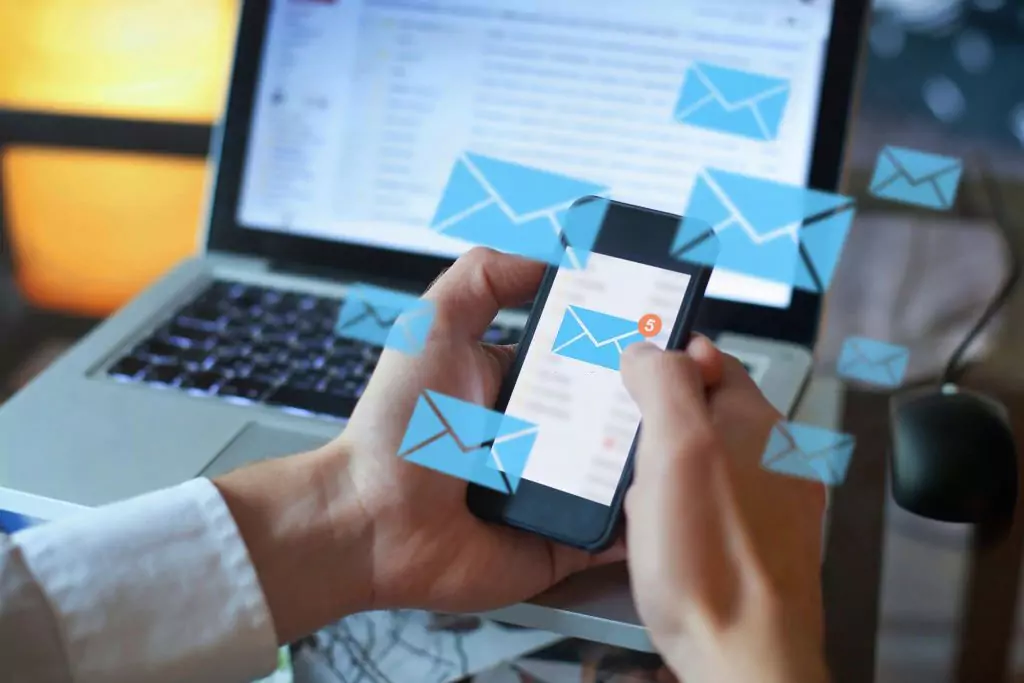Why Is The Subject Line Of A Business Email Important
Introduction
In the world of email marketing, the subject line is often the first point of contact between a business and its audience. It is the gateway to getting your email opened and read. With the average person receiving dozens, if not hundreds, of emails every day, it is crucial to have a subject line that grabs attention and stands out in a crowded inbox. In this blog post, we will explore the importance of email subject lines in driving open rates and discuss strategies for crafting compelling subject lines that drive results.

The Power of a First Impression: How a Compelling Subject Line Can Make or Break Your Email
First impressions matter, and this holds true in email marketing as well. The subject line is the first thing recipients see when they receive an email, and it plays a significant role in determining whether they will open it or not. A compelling subject line can make recipients more likely to open the email, while a lackluster or generic subject line can lead to it being ignored or deleted.
To make a strong impact with your subject line, it is important to be concise, clear, and compelling. Use language that evokes curiosity, urgency, or excitement. For example, instead of a generic subject line like “New Product Announcement,” try something more attention-grabbing like “Introducing Our Game-Changing Innovation: Be the First to Experience It!” This creates intrigue and makes recipients curious to learn more.
Catching Their Attention: Crafting Subject Lines That Stand Out in a Crowded Inbox
One of the biggest challenges in email marketing is standing out in a crowded inbox. With so many emails vying for attention, it is crucial to craft subject lines that catch the recipient’s attention and make them want to open your email.
To achieve this, consider using personalization techniques such as including the recipient’s name or referencing their previous interactions with your brand. For example, instead of a generic subject line like “Special Offer Inside,” try something more personalized like “John, Exclusive Offer Just for You: 50% Off Your Next Purchase!”
Additionally, it is important to be concise and clear in your subject lines. Avoid using vague or ambiguous language that may confuse recipients. Instead, clearly communicate the value or benefit they will receive by opening your email. For example, instead of a subject line like “Don’t Miss Out,” try something more specific like “Limited Time: 20% Off All Products!”
Boosting Open Rates: The Key to Getting Your Business Emails Read
The correlation between subject lines and open rates cannot be overstated. A well-crafted subject line can significantly increase the likelihood of your email being opened and read by recipients. To boost open rates through subject line optimization, there are several techniques you can employ.
Firstly, consider using numbers or statistics in your subject lines. This adds credibility and makes your email appear more valuable to recipients. For example, instead of a generic subject line like “Tips for Success,” try something more specific like “5 Proven Strategies for Doubling Your Sales!”
Secondly, create a sense of urgency in your subject lines. By using words like “limited time,” “exclusive,” or “ending soon,” you can create a fear of missing out and motivate recipients to open your email right away. For example, instead of a subject line like “New Collection Now Available,” try something more urgent like “Last Chance: Shop Our New Collection Before It’s Gone!”
Lastly, consider using emojis in your subject lines. Emojis can add visual appeal and help your email stand out in a crowded inbox. However, it is important to use them sparingly and ensure they are relevant to the content of your email. For example, if you are promoting a summer sale, you could use a sun emoji in your subject line to convey the theme.
The Art of Persuasion: Using Subject Lines to Influence Action and Drive Results
Subject lines play a crucial role in persuading recipients to take action. Whether it is making a purchase, signing up for a webinar, or downloading a free resource, a persuasive subject line can significantly impact the success of your email campaign.
To create persuasive subject lines, it is important to clearly communicate the value or benefit recipients will receive by taking the desired action. For example, instead of a subject line like “Join Our Webinar,” try something more persuasive like “Discover the Secrets to Doubling Your Revenue: Join Our Exclusive Webinar!”
Additionally, consider using social proof in your subject lines. By referencing testimonials, reviews, or endorsements from satisfied customers or industry experts, you can build trust and credibility with recipients. For example, instead of a generic subject line like “Try Our New Product,” try something more persuasive like “Over 10,000 Satisfied Customers Can’t Be Wrong: Try Our New Product Today!”
Lastly, it is important to align your subject lines with the content of your email. If your subject line promises something that is not delivered in the email, recipients may feel deceived and lose trust in your brand. Ensure that your subject line accurately reflects the content and value of your email.
Creating Curiosity: How to Intrigue Your Recipients with a Compelling Subject Line
Creating curiosity through subject lines can be a powerful way to engage recipients and make them want to open your email. By piquing their interest and leaving them wanting more, you can increase the likelihood of your email being opened and read.
To create curiosity-driven subject lines, consider using teasers or cliffhangers that hint at valuable information or exclusive offers inside your email. For example, instead of a subject line like “New Blog Post: 10 Tips for Success,” try something more intriguing like “Discover the Surprising Secret That Successful Entrepreneurs Swear By!”
Additionally, consider using questions in your subject lines. Questions naturally create curiosity and make recipients curious to find the answer. For example, instead of a subject line like “New Product Launch,” try something more thought-provoking like “Are You Ready for the Game-Changing Product That Will Revolutionize Your Business?”
Lastly, consider using power words or strong language in your subject lines. Words like “secret,” “exclusive,” “unveiled,” or “revealed” can create a sense of intrigue and make recipients curious to learn more. However, it is important to use these words sparingly and ensure they are relevant to the content of your email.
Personalization Matters: Tailoring Subject Lines to Connect with Your Audience
Personalization is a key factor in building strong customer relationships, and it extends to subject lines as well. By tailoring your subject lines to connect with your audience on a personal level, you can increase engagement and drive better results.
One technique for incorporating personalization into subject lines is to include the recipient’s name. This simple touch can make the email feel more personalized and relevant to the individual. For example, instead of a generic subject line like “New Product Announcement,” try something more personalized like “John, Get Ready for Our Exciting New Product Launch!”
Another technique is to reference the recipient’s previous interactions with your brand. If they have made a purchase or engaged with your content in the past, you can use this information to create a more personalized subject line. For example, instead of a subject line like “Check Out Our Latest Collection,” try something more personalized like “John, We Think You’ll Love Our New Collection!”
Personalization goes beyond just using the recipient’s name or referencing their past interactions. It is about understanding their needs, preferences, and pain points, and tailoring your subject lines to address them. By showing that you understand and care about their specific needs, you can build a stronger connection and increase the likelihood of engagement.
A Fine Balance: Striking the Right Tone in Your Subject Line for Maximum Impact
The tone of your subject line plays a crucial role in how it is perceived by recipients. It sets the expectation for the content of your email and can impact open rates and engagement. Striking the right tone based on your target audience and email content is essential for maximum impact.
The tone of your subject line should align with your brand personality and the overall message you want to convey. For example, if your brand is known for being fun and playful, a subject line with a light-hearted tone may be more appropriate. On the other hand, if your brand is more professional and serious, a subject line with a more formal tone may be better suited.
It is also important to consider the context in which your email will be received. For example, if you are sending an email to follow up on a customer support inquiry, a subject line with a helpful and empathetic tone may be more effective. On the other hand, if you are sending a promotional email, a subject line with an enthusiastic and persuasive tone may be more appropriate.
Ultimately, the key is to strike a balance between being attention-grabbing and staying true to your brand voice. Experiment with different tones and analyze the impact on open rates and engagement to find what works best for your audience.
Beyond Words: Leveraging Visuals and Emojis in Subject Lines to Engage Your Audience
While words are important in subject lines, visuals and emojis can also play a powerful role in engaging your audience. They add visual appeal, help your email stand out in a crowded inbox, and convey emotions or messages that words alone may not be able to.
When using visuals in subject lines, it is important to choose images that are relevant to the content of your email and align with your brand identity. For example, if you are promoting a new product, you could include an image of the product in your subject line. This can create visual interest and make recipients curious to learn more.
Emojis can also be a great way to add visual appeal and convey emotions in subject lines. However, it is important to use them sparingly and ensure they are relevant to the content of your email. For example, if you are sending a promotional email for a summer sale, you could include a sun emoji in your subject line to convey the theme.
When using visuals and emojis in subject lines, it is important to consider how they will be displayed across different email clients and devices. Test your subject lines on different platforms to ensure they are displayed correctly and enhance the overall user experience.
Timing is Everything: Understanding the Best Times to Send Business Emails for Maximum Open Rates
Timing plays a crucial role in email marketing success. Sending your emails at the right time can significantly impact open rates and engagement. Understanding the best times to send business emails for maximum open rates is essential for optimizing your subject line performance.
The best time to send business emails can vary depending on your target audience and industry. However, there are some general guidelines that can help you determine the optimal timing for your emails.
For B2B emails, it is generally recommended to send them during weekdays, preferably in the morning or early afternoon when recipients are more likely to be checking their emails. Avoid sending B2B emails on weekends or late in the evening when they may be less likely to be read.
For B2C emails, the optimal timing can vary depending on the target audience and industry. However, it is generally recommended to send them during weekdays, preferably in the late afternoon or early evening when recipients may have more free time to engage with their emails.
It is important to note that these are general guidelines and may not apply to every audience or industry. It is recommended to test different send times and analyze the impact on open rates and engagement to determine the optimal timing for your emails.
Measuring Success: Tracking the Impact of Your Subject Lines on Email Campaign Performance
Tracking and analyzing subject line performance is essential for optimizing your email campaigns and driving better results. By measuring the impact of your subject lines, you can identify what works and what doesn’t, and make data-driven decisions to improve your email marketing strategy.
There are several metrics and tools you can use to track subject line performance. Open rates, click-through rates, and conversion rates are some of the key metrics to monitor. These metrics can provide insights into how well your subject lines are resonating with your audience and driving engagement.
Additionally, A/B testing is a powerful technique for testing different subject lines and analyzing their impact on email campaign performance. By sending two versions of an email with different subject lines to a small segment of your audience, you can determine which subject line performs better and use that knowledge to optimize future campaigns.
It is important to track subject line performance over time and look for trends or patterns. Analyze the impact of different variables such as personalization, tone, visuals, or emojis on open rates and engagement. Use this data to refine your subject line strategy and continuously improve your email marketing efforts.
Conclusion
In conclusion, email subject lines play a crucial role in grabbing attention, driving open rates, and ultimately, achieving email marketing success. Crafting compelling subject lines that stand out in a crowded inbox, boost open rates, persuade recipients to take action, create curiosity, personalize the message, strike the right tone, leverage visuals and emojis, understand the best times to send emails, and track performance are all essential strategies for optimizing your subject line performance.
By implementing these tips and strategies, you can improve the effectiveness of your email subject lines and drive better results in your email marketing campaigns. Remember to continuously test, analyze, and refine your subject line strategy based on data-driven insights. The ongoing importance of subject line optimization cannot be overstated in the ever-evolving world of email marketing.






